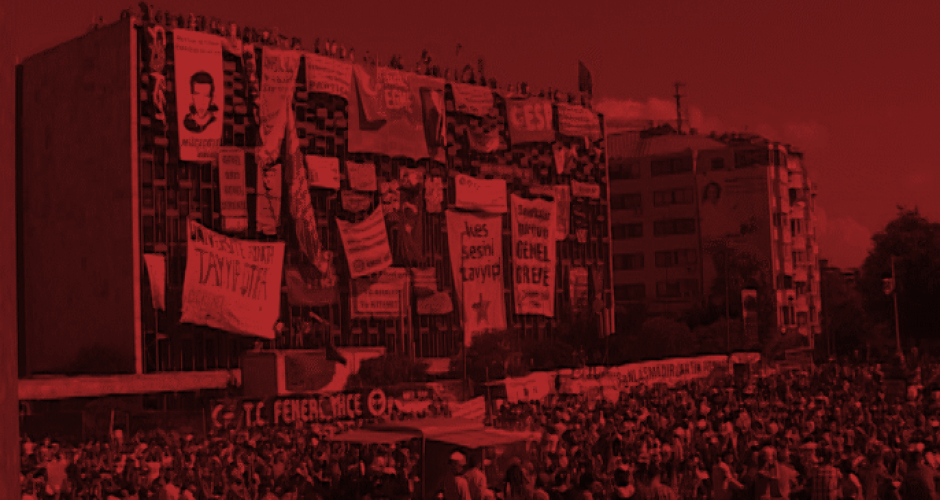You are here
The Gezi Park movement in 2013

The Gezi Park movement in 2013
In June 2013, we were in Istanbul to inquire about the relation between the Gezi Park movement and workers’ struggles in Turkey
The Gezi Park movement in 2013 was probably one of the most important square movements of the 2011-2013 wave of struggles. For weeks, hundreds of people camped in the park, putting together their ideas and energy not only to refuse Erdogan’s gentrification plans for the city but also against a general restriction of liberties, media propaganda and police repression. People experienced with forms of sharing that banned the use of money and they started discussing questions such as gender and homo- / transsexuality. This can be seen in the forum that was held in the middle of Gezi Park where anybody could intervene and explain why they took part in the struggle:
"We are here as LGBTT individuals; gays, lesbians, bisexuals, transvestites and transexuals!"
An den Wochenenden und abends kamen Hunderttausende zum Taksim Platz, der den Gezi Park umschließt, um zu demonstrieren. Taksim war und ist für die Geschichte der Arbeiter_innenbewegung ein symbolisch aufgeladener Ort wegen mehrere Erster Mai Demonstrationen, die auf eben diesem Platz mit extremer Gewalt angegriffen wurden. Wenn Menschen aus allen sozialen Schichten kamen, und unter ihnen natürlich auch viele Arbeiter_innen, so kamen die übergroße Menhrheit von ihnen doch nach Feierabend und trugen den Kampf nicht in ihren Arbeitsplatz. Arbeitsthemen wurden kaum genannt in der Bewegung und wir wollten wissen, ob es indirekte Verbindungen gab zwischen der Gezi Park Bewegung und Arbeiter_innenkämpfen aus der jüngsten Vergangenheit in der Türkei. Deshalb interviewten wir Ali Ergin Demirhan, einen Aktivisten und Mitglied von sendika.org, einer unabhängigen Webseite, die Informationen zum Thema Arbeit versammelt und die im Moment von Zensur bedroht ist (siehe ein Statement vom Juli 2015). Wir fragten ihn, wie die Bewegung mit Arbeiter_innenkämpfen zusammen hängt:
"This is a political struggle, but it has many social roots, years of social struggles accumulated for it to take place."
As Ali Ergin Demirhan mentioned, some workers were striking at the time of the Gezi movement and they used the square to make their struggle visible to the rest of protesters. We interviewed the striking workers of the company Turkish Airlines who had been on strike for 25 days when we met them in the park:
"Gezi Park is our heart. We're now rebelling. We're saying: Enough!"
In the park, we also met textile workers who had been on strike for 17 months. They were protesting against their firings and demanding their unpaid wages from management:
"This square has a significance, the workers have understood this and that's why they've flocked here."
On the 15th of June 2013, the square was cleared very violently by the police, putting an end to the movement (even if some initiatives remained, including the organisation of public forums in other parks in Turkey). The repression has been high ever since, and protesters never managed to return to the square to re-occupy it. Still, since 2013, Turkey has witnessed a high number of protests and strikes, including the 60-day occupation of the factory Greif in 2014 and a wave of wildcat strikes in many car factories in the region of Bursa in May 2015.
More information about these recent strikes:
About the occupation of the Greif factory :
documentary on labournet.tv (with german subtitles only)
About the strikes in Bursa in May 2015:
http://fsrn.org/2015/05/wildcat-strikes-spread-across-auto-industry-in-turkey/